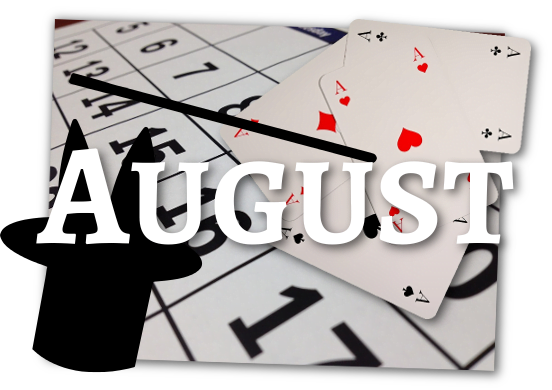Story Pile: Oddtaxi
I have a concern about what I can only describe as ‘That Guy’ Media. I don’t have a precise list, but there are some kinds of media that slot into a particular space where someone, usually a white millenial guy, will exhort you that oh man you gotta check this out. And then they’ll hesitate almost performatively, like we I mean they’ve practiced this in the bathroom thinking about how we’re going to explain it to a stranger or a friend or some other captive audience, and it’ll be something like ‘… I can’t tell you much without spoilers,’ that eventually degenerates into ‘look, Just Watch It’ or something like that.
When I talked about Knives Out, in an effort to give a view on the movie that was interesting if you hadn’t seen it and interesting if you had, I did so thinking about something that was missed in the swirl of commentary about this movie. These articles aren’t being written for no reason, they’re written because I want to talk to you about something, and I want to talk about it in the context of something that I’ve watched or read or listened to. It’s when I engage with something and words about it want to get out of me.
And Oddtaxi is boy howdy the kind of series that makes me full of words. A frustratingly large number of them are “Have you watched Oddtaxi? Oh, okay.”
But talking about Oddtaxi runs the risk, at least in my mind, of making it into That Guy Media. It’s not even as pure as the Gay Effusing you get when an anime has two hot girls who like each other where a commentator just foams “It’s good. It’s good. It’s good. You should watch it. It’s so good.” for ten minutes. It’s the smug cousin of that, which lacks the purity of “Oh My God I’m Finally Seeing Media I Like,” and is instead the same voice that asks “Oh, Have you seen the Raid?” or “Do you know the twist in Fight Club?“
If you’re just here for an as-brief-as-possible, why-should-I-watch-this summary, I’m going to say that I like Oddtaxi, an anime I watched in its entirety in one day and which reminds me of Durarara!! and Paranoia Agent, but less bleak or apocalyptic. Lots of competing narratives, clear use of imagery, clearly neurodivergent protagonist, great music.
Okay, so what am I going to talk about beyond the fold?
What could I talk about, if I’m not going to effuse about the text, about its ideas, or its concepts?
Continue Reading →Story Pile: Fringe
Well, this is a chonksome spoiler warning.
If I’m going to talk to you about what I found interesting about Fringe, I’m going to need to talk to you about each season of Fringe, and it’s an interesting series in that each season introduces a new status quo, and then usually changes that status quo midway through the season. A good way to think of it is that the five seasons of Fringe are one show trying out five different genres as ways to tell a story, in a broad way.
If you want an opinion of Fringe without the spoilers, though, I’d say that it’s pretty good. It says a lot about how TV series with interesting ideas work in that I am finding myself best able to describe it as ‘It never angered me,’ as if that’s a mark of high quality and esteem while not making it sound like it’s some sort of masterpiece. The episodes have to be watched in order (and one was screened out of order), the creator’s vision is reasonably interesting, and each season changes things so that if you dislike one season you know a change is coming.
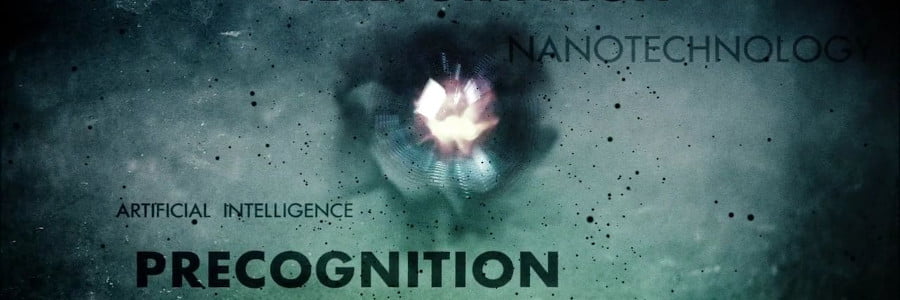
It’s really good sci fi if what you’re looking for is decent sci fi, rather than pop-the-top-off-your-head-expand-your-brain-weirdness sci fi. If you’ve read even one decently sized science fiction short story collection, you’ve read the kind of stories you’ll get here, interspersed with a different ‘big idea’ world thing going on, along with some reasonably interesting, fun characters.
Okay? Like, that’s the recommendation. Fringe never made me deeply exasperated with it being stupid.
An added content warning: This is a series with a lot of body horror. Most episodes open with a 5 minute short story about something graphically awful happening to a human through the metaphor of a human body. Drugs are a constant presence, with Walter regularly offhandedly mentioning being stoned out of his gourd, too.
Continue Reading →Remembering Ed Brayton
Two years ago, today, Ed Brayton told us he was about to die.
Content Warning: Death, Fundie Stuff
Continue Reading →The Sodafunk Swindle
Hey, you wanna talk about some year old dumb-as-hell vtuber drama that nonetheless ties into toxic conversations about monetisation, ownership of labour, body shaming, gender transition and capitalism?
No?
Oh okay, that’s reasonable, feel free to move on.
Continue Reading →Story Pile: True Story
Okay so here’s a real thing that happened.

Content warning: Domestic Violence and Intimate Partner Murder, Slavery
Spoiler Warning: Spoilers for the movie and the real events around the movie
Continue Reading →The Man From Taured
Have you heard this story?
If you have, chances are you’ve heard about it from a channel that does spooky real stories or wants to talk about the things the man doesn’t want you to know about or there are bugs in my teeth no not microphones, actual little bugs with so many wiggly legs. It’s one of a small corpus of ‘true scary stories’ that get covered in the venn diagram of ‘creepy things that exist’ like La Isla de las Muñecas, or the Winchester house, or ‘interesting crime with an open ended question’ like the hijacking by DB Cooper and the disappearance of Jimmy Hoffa.
If you haven’t –
Well, wait, let me set the tone properly. Turn off the lights and put on some spooky music from the Kevin Macleod archives.
Continue Reading →Legal Systems in Cobrin’Seil
Let’s talk about the complicated way people in a D&D setting find justice.
Understand that a body of this thinking is a byproduct of watching this Burgerkreig video. I’m summarising some points and his overall structure, and I’m trying very hard to not just copy his metaphors and jokes. This kicked me into realising that I had, in fact, actually done this for part of my setting, which meant I had something useful, a default.
Having the Eresh Protectorate as a central setting component is very handy, because they help to standardise things across the entire vast continent of Bidestra. Not that they impose a singular standard per se, but because when there’s one cultural marker spread across a region, other cultures can point to it and say ‘we do it that way’ or ‘we don’t do it that way.’

What I like about it in this case specifically is that when we look at the legal system of the Eresh Protectorates, it is ridiculous and full of uneven, inadequately distributed systems for stupid reasons. But those reasons are all to some extent realistic and create points of tension for when I run the game, and give players a meaningful relationship to the systems in the world.
Continue Reading →MTG: July 2022’s Custom Cards
Hey, you do know I post these cards to both Reddit and Twitter, right? I just realised that you may not be aware that this is a daily thing, with room for discussion on every card.
uh anyway, July’s custom cards!
Warning: Wizards employees, this post contains primarily custom magic cards.

Tricks Month 2022!
The consensus reality is created by perception. Not that the reality of material objects is influenced by what you perceive, but humans do not act on reality of material objects, they act on their perceptions of the reality of material objects.
August is here, and with it brings our month’s theme. The theme is tricks, which I use to broadly refer to stage magic, con artistry, and in general, the way people are deceived.
This year more than most, I have been sitting seeing the theme of ‘tricks month,’ a time when I talk about goofy things brains do, lies, cons, scams and flimflam, and ‘dread month,’ a month where I feel free to talk about grim, fatalist, dreadful and terrible subjects, and those two things have been very rapidly growing their middle space in the venn diagram recently. Like early 2021, I wrote an article about the Human Mars Base That Definitely Exists Dude Just Trust Me thinking I had to explain what Qanon was in it, and oh lordy I did not expect things to get dumber.
I’ve got my subjects lined up this month and what I’m going to try and do is tell stories. Last year, I wrote about Henryk Orenstein which is still an absolute favourite bit of writing. But also I liked talking about Jasper Maskelyne, which way less popular as a post goes.
Don’t worry, though, my desire to keep things perky will keep the topics light. I hope. I’m going to tell you the story of one of my favourite conspiracy theories where the explanation is legit more interesting than the myth, about the murder mystery of the author, and one of the greatest liars of World War 2.
Story Pile: Psych
I almost did this as a Sherlock Holmes thing earlier in the year.
Psych is a TV series that is still? Kind of? Technically? Ongoing? It started in 2006, and in the first episode, Shawn is excited to maybe get his hand on some free CD Wallets, while in the most recent 2021 movie (This Is Gus), they suggest someone change her name from ‘Karen,’ because of the meme. It follows Shawn, a modern day Sherlock Holmes who has tuned the ‘easily bored smug dickhead’ dials all the way up, and sets him and his best friend Gus, a longsuffering niche pharmaceutical sales representative and probably iconic blerd?, in a new shared task of running a detective agency, which solves…? Crimes?
Oh and the gimmick is they pretend Shawn is a psychic.

Because that gives them a legitimacy that they don’t have by default.
You know, like real psychics.
Low key, this is the thing that I found the most interesting about the pitch of this series; it’s about how cops are so bad at being cops that they will turn to outside sources to help them solve things, and those things are nonsense. And the nature of power, and the way power is concentrated in our society, is such that The Police, a serious institution with the Serious Job of Seriously Engaging with Serious Crimes, have means to accept the help of psychics before they have means to accept the input of ordinary people who are just good at the things police think they shouldn’t be good at.
The whole series starts with that premise: Police are bad at their job, and when they encounter someone good at their job, they assume that must be for illegitimate reasons.
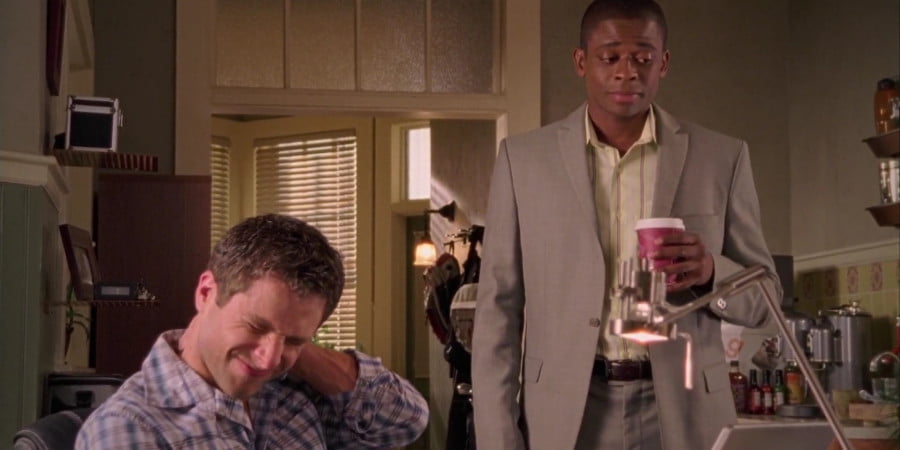
August 2021 Wrapup!
And thus, the flourish, the finale, the end of the performance, and tricks month draws to a conclusion. This was an interesting month, as many of the pieces were quietly done throughout the year, and postponed to now; this created a strangely out-of-time experience as, when written, I felt ‘well, I’m going to need to explain a lot about Qanon, I guess,’ as opposed to the relatively mainstream bullshit it is now.
Still, let’s have a look at the blog, shall we?

Story Pile: The Great Pretender
Anime is a crapshoot.
This slot has been tied for The Great Pretender for the better part of a year. The plan was, after seeing it, being so intrigued with the opening, that I’d watch the whole thing in the first few months, once Crunchyroll had it on their ads-paid area.
When I felt it was time, I watched the first two episodes.
Thought about it…
And stopped.

MTG: August’s Custom Cards: Tricksy Cards!
With the end of tricks month we have another collection of daily Magic: The Gathering cards. This month, we didn’t have a mechanical identity to work with, but instead we wanted to work with the same theme of TRICKS.

How To Be: Disney’s Robin Hood (in 4e D&D)
In How To Be we’re going to look at a variety of characters from Not D&D and conceptualise how you might go about making a version of that character in the form of D&D that matters on this blog, D&D 4th Edition. Our guidelines are as follows:
- This is going to be a brief rundown of ways to make a character that ‘feels’ like the source character
- This isn’t meant to be comprehensive or authoritative but as a creative exercise
- While not every character can work immediately out of the box, the aim is to make sure they have a character ‘feel’ as soon as possible
- The character has to have the ‘feeling’ of the character by at least midway through Heroic
When building characters in 4th Edition it’s worth remembering that there are a lot of different ways to do the same basic thing. This isn’t going to be comprehensive, or even particularly fleshed out, and instead give you some places to start when you want to make something.
Another thing to remember is that 4e characters tend to be more about collected interactions of groups of things – it’s not that you get a build with specific rules about what you have to take, and when, and why, like you’re lockpicking your way through a design in the hopes of getting an overlap eventually. Character building is about packages, not programs, and we’ll talk about some packages and reference them going forwards.
This month, I felt it was time to approach the challenge from a different angle, of taking something with an obvious, easy, simple solution and then exploring around that. And for that, we’re going to look at a classic character, a character who’s so well known we don’t even remember we’re referencing him when we reference him. A folk hero, a hero who defined a generation and set thousands of people on their path that would determine the kind of person they’d be.
We’re going to look at Robin Hood.
Specifically, the 1973 Disney’s Robin Hood.
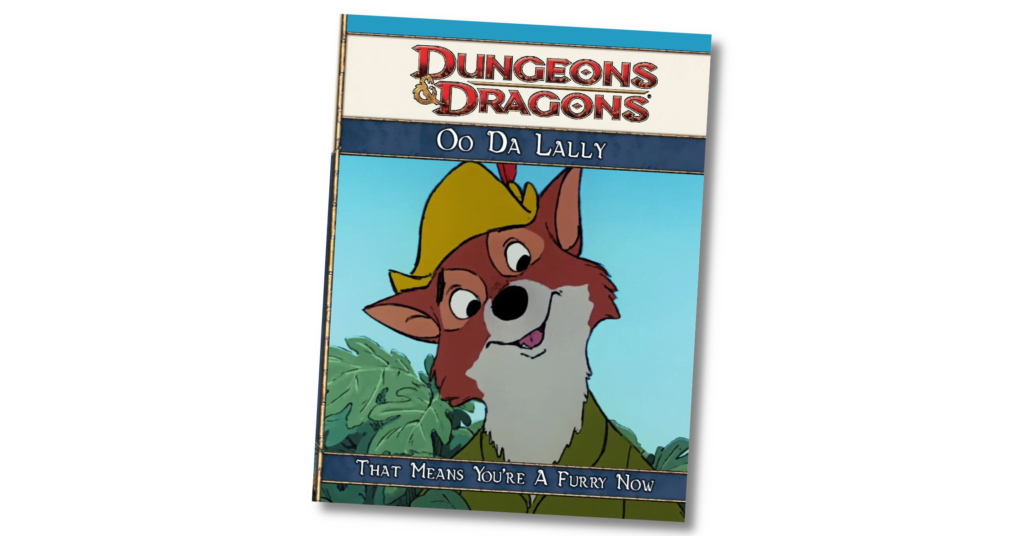
Game Pile: Magic Trick
This is a cute little game about playing a skateboarding kid in a town of animal people. It has pickups and tricks and magical powers that give you fast travel. It’s not a long game and I imagine if you’re better at skateboarding games than me, it’d probably only take a few hours to finish. It’s charming, it’s sweet, there’s a trans flag in the banner art.
If you want to check the game out, you can go get it here, and also, if you bought the Bundle For Racial Justice back in 2020, you already own a copy. But it’s also really cheap, so maybe buy it again?
I’m thinking more and more when it comes to itch games, just showing them off on my platform and talking about what I like about them is more interesting than trying to apply some deeper analysis to them. Not that I won’t for games that inspire it, but especially when it comes to games like this, I want to make sure I’m taking the opportunity to just share games.
Be kind with energy,
Be cruel with purpose.
3.0 D&D: Everyone Shapeshifts
Min-maxed 3.0 D&D was fucking weird.
I use the term 3.0 to talk about ‘third edition’ because there’s this weird way that people treat ‘3rd edition’ D&D as a single game, and not a period of time between the last release of 2nd edition and the first release of 4th edition. 3rd edition content is still being made and the game is still being played, even if I’d moved on from it. Important to this, though, is that ‘3rd edition’ is a term that I feel inappropriately ambiguates the two games made in 3rd edition.
When people are criticising 4th edition — hey maw he’s defending 4th edition gain — sometimes you get a ‘timeline’ argument; the idea that 4th edition, as a game that was only actively published and promoted for six years before the introduction of 5th edition. 5th edition has been going for 7 years since then (two of which were pandemic years), and 3rd edition went from 2000 to 2008, showing that 7 and 8 years are ‘good’ times for a game to exist, and 4th edition’s 6 years indicate that it was a ‘bad’ time. Thing is, 3rd edition D&D, the thing before 3.5, was only around for 3 years, and it was not the same game as 3.5. You couldn’t just pick up classes, creatures, or monsters and port them over. First party feats and classes were generally all weaker than 3.5, and spells were largely stronger.
4th edition never released a supplement that wasn’t compatible with all of 4th edition. By comparison, 3.0 lasted for 3 years, and 3.5 lasted for four – an immense rules patch apology.
And trust me, it was an immense rules patch.
Like, did you know in 3rd edition, in min-maxed groups, you basically never bothered building for physical stats if you were starting after level 3 or so?
Because in a min-maxed party, you very rarely were dealing with un-polymorphed characters.
Continue Reading →Chess “Doping” and Outside Notes
Right now, Chess is having a doping problem.
Yes, Chess.
Yes, doping.
CW Drugs, but also no, not drugs.

The Mormon Murders
Let’s talk about conspiracies.
Let’s talk about lies.
Let’s talk about protecting very important lies.

A content warning, though. I am going to talk about Mormonism, Mormon history, and the Mormon church. I don’t believe in Mormonism’s depiction of history, and I do not believe that the historical record of Joseph Smith is somehow corrupted. If you don’t want to hear an outsider speaking frankly about his opinion of Mormonism — and you probably know what that’s going to be like — then I recommend you skip on out.
Continue Reading →Story Pile: Now You See Me 2
This movie is shockingly bad.
That’s not hyperbole; when I watched the first Now You See Me I was shocked at how bad it was, with the structure of the movie and its general incompetence creating this sort of impossibly tangled mess of failure. To describe the plot of that movie is to rush past constant cul-de-sacs of narrative failure, an act of will that requires you to treat the movie as if it’s better than it actually is, because of its bottomless well of failures. Now You See Me 2 takes that bottomless well of failure and installs a sub-basement, in all the ways that unnecessary sequels do.
This original movie was terrible, and this movie is aggressively worse.
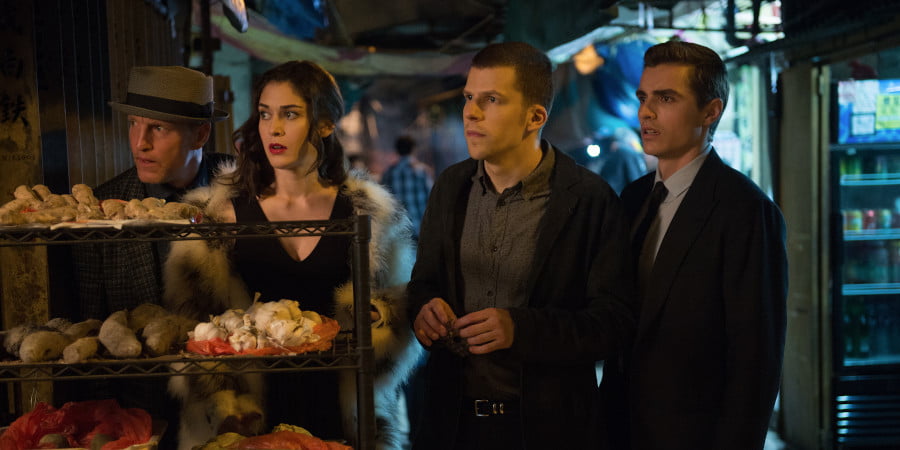
Being That Guy About Magic
Hey, you know that guy who brings a guitar to every party?
And how everyone hates that guy?
You know what’s even worse than being the Wonderwall guy?

Being a guy who can (and wants to) do magic tricks.
CoX: Wolfbit
Time to time, I write up an explication of characters I’ve played in RPGs or made for my own purpose. This is an exercise in character building and creative writing.

Cody always knew someone. He was the kid who knew everyone shifty, who could get you favours, who could find you things off the books. He never really worked out why he was good at it, why he could remember these trades so well, why he could read the people around him for what worked, what made sense about them.
When the wolf woke up, it made a bit more sense.
He’s a fixer, a bit of a crook, certainly a bit grubby. There’s a lot of ways poor people make things happen in the city, and in the dark spaces, sometimes you hope to find the wolf.
Continue Reading →Game Pile: Kyrandia 3: Malcolm’s Revenge
The medium is the message. If you look at the way things are made, rather than the content that is presented, you can see patterns of behaviour, see deformations of the way that things got made. The point-and-click adventure, for example, tends to get framed as a sort of game creature that evolved on the PC platform, existed for a while, then classically died out out of incompetence.
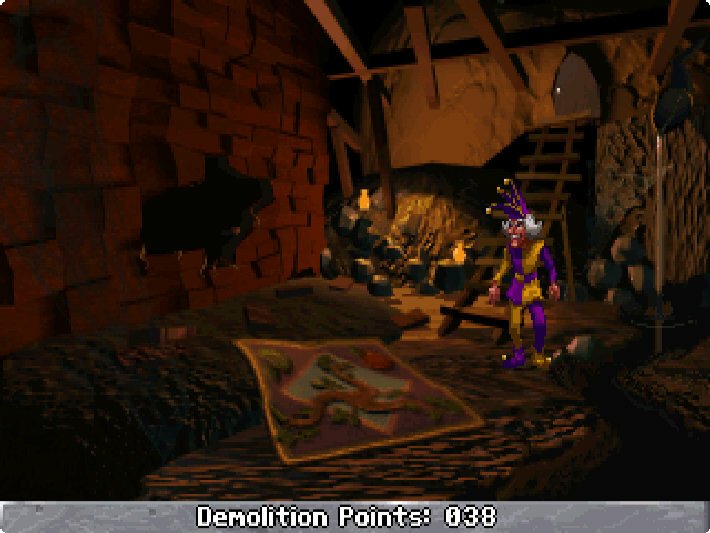
The Eucharist Wafer Conspiracy
Who doesn’t love a good Catholic conspiracy theory?
Not one of the conspiracy theories the Catholics have used to shape the way the world views faith and itself, no, those tend to be a bit more… well, they’re the conspiracy theories that we think of as ‘conspiracy theories,’ and they almost all seem to trace back to someone saying ‘Well, Martin Luther was wrong about a lot of things, but as far as it goes on the jews.’
And this isn’t one of those Protestant conspiracy theories about Catholics, which range from ‘they put cornflakes in their bed to stop masturbating’ (kinda true) to ‘they can’t whistle or the pope will hear,’ (definitely not true). It’s about eucharist wafers, and it’s about a conspiracy that, seemingly, some Catholics seem to think exists despite not believing in it.

The Eucharist wafer, if you’re not familiar, is a small bit of more-or-less bread used in a ritual known as the eucharist. During the Biblical narrative of the last supper, a ceremony we mostly document from the one person who definitely makes it clear he was not there, Jesus gives a speech where he offers the disciples wine and bread, saying, and I paraphrase, ‘Come, eat of this, for it is my body and blood, eat it in remembrance of me.’ It’s something Protestants and Catholics share as a ritual.
It is, however, supremely weird.
It’s really one of the sources of dissent between Protestants and Catholics – there’s an idea that this ritual, along with the baptism of infants, was basically one of the things that got the ball rolling on all the schisming and that’s why one of the major groups of not-Catholic Christians that hate the Catholics a lot (except when they’re trying to leverage them for political power) are known as ‘Baptists.’
The weird ritual is a little weirder in Catholic circles because of a belief known as transubstantiation. This idea is that the eucharist, when consumed, literally transforms into actual real Jesus meat and actual real Jesus blood. This belief was used to claim that Catholics were cannibals and tie them to blood libel (and what the hey, we’re back at the Jewish stuff again, that’s weird and sucks).
Transubstantiation is contentious because this idea, that the wafer and wine become real blood and meat is actual Church doctrine. That’s like, inasmuch as there are rules on this stuff, that’s what the rulebook as written says is there. The consensus amongst Catholics in the United States is, however, that this isn’t true; about two thirds of Catholics think that it’s entirely symbolic, just under one third believe it’s not. The church says it’s true, most people don’t believe it.
This makes it an interesting question to ask about on forms, and that gave us this beautiful graph from August 2019.
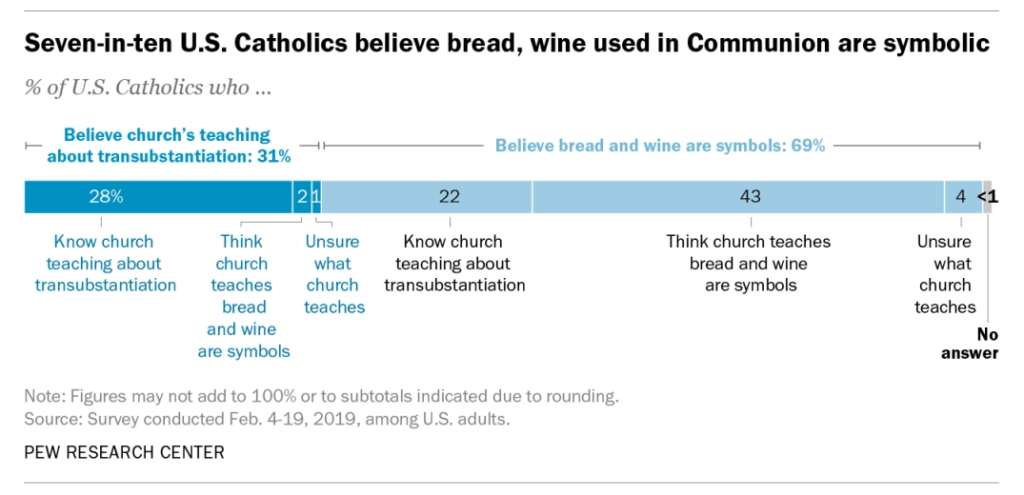
In this graph, we see that 69% of people (nice) don’t believe that the eucharist becomes real god meat. 31% believe it does. But there’s a breakdown in that; of the 69% of catholics who think that the bread and wine are symbolic, about two thirds of them think that the church also teaches that the wine and bread are symbols. This means that of the entire cohort, almost 45% of Catholics think that the bread and wine are symbolic, which is incorrect, according to the Catholic church itself.
Here, though, is where it gets wonderfully weird.
There is a cohort of 31% that believe that the food they are eating is magically transformed into god meat and blood. This is made up of a body (hah) of around 14 million Catholics, who believe in transubstantiation and who also believe that the church teaches transubstantiation. Yet next to them, in that weird little sliver, is that 2% that believe that it does become god meat… but that the church teaches it doesn’t.
What the heck.
What do they think happens there?
It’s this beautiful little bubble. How do you believe in a core point of doctrine for your church while believing they don’t agree with you, while also believing the weirder thing. Believing that you are secretly transubstantiating with a ritual performed by a priest who you also think is not doing the thing required for transubstantiation to happen, but you’re somehow bootlegging Jesus Bacon into your system some other way?
A little secret community of roughly a million Catholics in the United States.
Weird, huh?
We Are The Night: Aspirations, Contusions, And Bullshit
These articles document the ongoing process of examining the things required to make a Blades in the Dark hack. The premise is using Blades in the Dark to emulate a heroic vigilante environment, akin to the settings of Gotham City from We Are Robin, or Ikebukuro from Durarara!!

This time, I want to talk about a mechanical change to the injury system. We’re going to talk about Harm and Trauma, and ways to change that system.
Continue Reading →Henry Orenstein
I’m going to tell you a story. It jumps around a little, to future and past, and it has a big twist in it that I’m going to need you to trust me on. Because of that, the fold – and content warning – is coming later than you’d expect.
This story, started, for me, on the Transformers wiki.
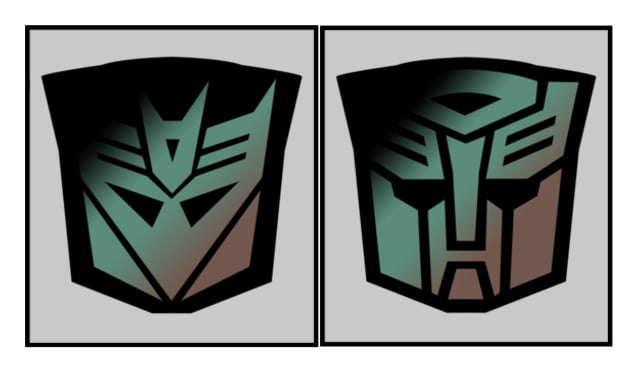
This is a Rubsign. It’s a small piece of plastic that’s heat-reactive. When Transformers started out as a brand, there was an immediate push to make cheap knockoff toys with similar ideas. In order to ‘protect’ the brand and ensure kids only wanted to buy the genuine Transformers, they developed something that they could pretend was part of the play pattern: a small symbol on the robot’s body that had the silhouette of either the Decepticon or Autobot faction, and you wouldn’t know for sure if you didn’t heat it up, usually as a child, by rubbing it with your finger.
Transformers, and their gimmick of ‘transforming’, is essentially, open source. You can’t copyright it or even copyright the techniques of a mould. This is one of the reasons there’s so many knockoffs of those toys — the actual technique of a transforming toy is pretty much uncopyriteable method.
The rubsigns, however, were made with patented technology; not only weren’t other people allowed to put them on their toys, but even worse, they simply couldn’t make them because the method for their creation was proprietary. What I thought as a child was a clever way to represent a disguise, for a moment of tension in the narrative, was really just a corporate control collar, a thing that meant they could draw a hard line between their version of the idea and the other, shitty ones, so I could ensure my collection of second hand transforming robot toys was properly branded.
Rubsigns are a cop is what I’m saying.
But, they had to be invented.

This is Henry Orenstein. Learning about the origin of the rubsign meant learning that to my surprise, the patent for them is not held by The company per se, but is instead partially owned by Hasbro, and partially owned by this one dude, Henry Orenstein.
When I found his name in the Transformers wiki, the wiki stated, perhaps boldly: His life is more interesting than Transformers.
Bold claim.

This is professional Poker. It’s a well known game that involves players playing for extremely large sums of money, often with similarly large sums of money involved in the buy-in. It’s grown in popularity over the past twenty years, in part because of improvements in presenting the game to an audience. Back in 1995, a patent was filed for a device known as a hole camera, which let the broadcasters collect the information about the players’ hands without doing anything that disrupted the natural flow of the game. The hole camera was used in 1999, and that’s about when poker started to pick up in public discourse.
And the patent for the earliest hole camera (which isn’t used much any more) is to a guy named Henry Orenstein. So important was this – and his winnings and his achievements lifetime – that he’s been inducted into the Poker Hall of Fame.

This is a Johnny Seven OMA, which were made by Topper Toys. And that’s a company Henry Orenstein founded to make his toys after being annoyed at how expensive dolls and toy guns were for poor kids. Topper Toys eventually folded into another brand, Deluxe Reading, which I understand if you are a hardcore toy collector, really into things like barbie accessories and cross compatibility, is very important to the hobby.
This background was how Henry got the attention of Hasbro, and wound up working with them on acquiring new toy properties. That meant he was in position to be in Japan, looking at Takara and Microchange toys, and come back with the idea of acquiring both toy sets, and rebranding them as Transformers in 1980.
Interesting dude, right? He should write a memoir.
Except he did already:
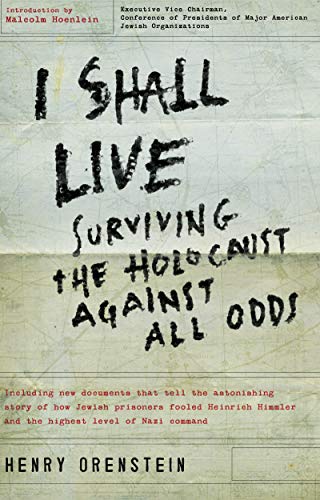
And now, when we jump back in the story, I have to say: Content Warning: Nazis.
Continue Reading →Story Pile: Wind of Change
Do you remember the song Wind Of Change?
Or, knowing my audience’s typical age, do you know that song your older sibling or parent or wine aunt or board game uncle liked, Wind Of Change, by 80s metal band Scorpions?
What if I told you that that song was not by Scorpions, but was, in fact, a CIA op designed to undermine the Soviet Union?
Okay, there are four broad responses to that idea and it depends on how you see media and how you see the CIA. If, for example, you think media is a completely powerless element of our reality, just a reflection that people partake of with no effect, and CIA as a sensible wing of the US government that largely spends its time listening to ambassadors and definitely not doing anything weird or unreliable with an enormous black budget, this probably sounds completely silly.
But if you see media as powerful, or you see the CIA as a pack of unaccountable weirdoes who occasionally destabilise governments ‘just in case we need that coup later’, then suddenly every part of it gets a little more believable.
And if you think that the media helps us shape our reality, especially as it pertains to political movements and popular uprising and that the CIA are the kind of organisation that spent thousands of dollars on developing cats that explode and dog poop radios, and then the whole thing sounds very believable.
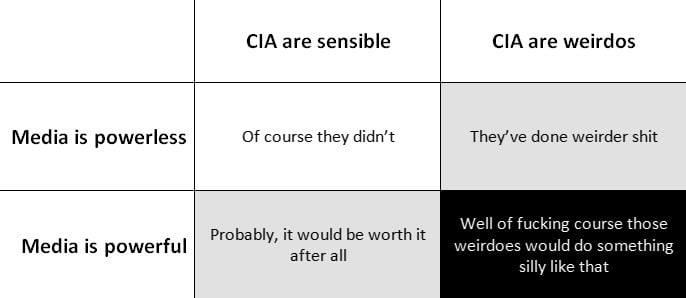
This idea doesn’t come out of nowhere, mind you.
It comes from the CIA.
So Russia Was A Thing That Happened, Huh
Content warning: I’m going to talk a brief bit about the Q conspiracy, and US Politics, particularly 2016 and the 45th president of the United States!
Continue Reading →Every Church Has A Conspiracy Theory
Qanon has been a surprising opportunity for a lot of people to learn something they probably never realised before: That the conspiracy theory wing of the world was bountifully alive, well, and extremely well-fed, in the existing landscape of Christian dominionism.
Content Warning: Church, Qanon and related subjects, American Christianity, and Conspiracy Theories.
Continue Reading →Game Pile: The Solitaire Conspiracy
Hey, here’s some leading text because I want to make more than just the youtube video show up in the tweet, and oh goshy gee! I like this game.
The Death of the Phonebook
Hey, do you know why you see magic tricks done with playing cards?
Continue Reading →Instant Stooging
People are really helpful.
In magic performances, the stooge is a person who seems to be unaffiliated with the performance, but who secretly is. You might also know this kind of performance, where an audience member or seeming bystander is roped into the performance, as one that uses a plant. This extra character is super useful — there’s a lot of different magic tricks that need this kind of tactic, they can be useful for setting up puzzles or even just introducing a prop that wasn’t there before. There’s a lot you can do with an extra pair of hands.
There’s also a thing where these days, with the prevalence of phones, and the potential for a trick to involve things like dialing a number, having someone who can pick up a dialled number is important too. There’s stuff you can do with recordings, but really, it’s just easier to have an accomplice who can answer or call some thing, right?
Stooge techniques open up a whole range of possible performances, but it’s not uncommon to see magicians and performers quietly disdaining stooging. I know the hypothetical argument against stooges when doing street cons is typically that you’ve halved your take – after all, one other person involved is someone else who can get caught, someone who can tell the police, someone who can get beaten up and interrupt your scam. It’s just a point of failure. This carries through to stage magicians, where the margins can often be extremely thin, and paying a plant is a meaningful cut of your earnings.
I don’t think it’s entirely economical, mind you. I don’t like using plants or stooges, because it’s hard enough to find someone who wants to see a magic trick, let alone someone who might want to collaborate on one. Also, just… it seems less clever? It’s a different skill axis, and that skill definitely deserves attention and respect, it’s just it’s not the skill I like developing.
Some magicians like to refer to stooging as a cheat, which I think overstates it. That creates the classic magical gatekeeping problem. It’s just that if you’re focusing on skillset A, for effect B, introducing skillset C just isn’t what you want to do. Magic cares about methodologies, after all.
This method, though, also introduces a really interesting piece of social engineering.

When you have a cohort in the crowd you use to make the trick happen, that’s stooging. But you can grab someone, out of the audience, and when you pull them up, you can just tell them to do things, and they will, usually do it. And I don’t just mean ‘come here, stand here,’ I mean you stand there, and you whisper in their ear stuff like ‘just say schnapps’ or ‘there’s a secret panel in the back of the box, press it.’ And … they’ll do it? They won’t stand there and go ‘hey, this guy is asking me to cheat,’ or ‘hey, I thought this was a magic show!!’ or stuff like that.
This is known as instant stooging, and it’s really wild, because you’d think surely that wouldn’t work.
You can do it a lot of different ways. Some classic magicians were fond of using kids in their acts because hey, a kid is innocent, they couldn’t be a conspirator, of course. What was happening, though, was the magician was, once the kids were close, threatened the kids and that kept them behaving in accordance with the trick. Which is a novel stunt, but also, wow, fuck you buddy.
Instant stooging has a problem in that when it fails, it tends to fail catastrophically, but good magicians are also catastrophe planners; lots of tricks are designed with a ‘get out’ clause to make a failure funny or to make it look like a setup for another part of the set. It also scales up in weird ways; if your show has props or sets that require containment, you might not want someone on stage who might be unpredictable, after all. When you have a really small audience, like three or four people, stooging one of them might be hard because when are you going to have the other people distracted?
Ultimately, though there’s a simple truth for why this tends to work: People are helpful.



